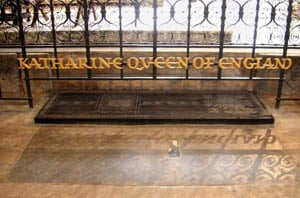Burradon Mining Disaster
Posted on
On the afternoon of 2nd March 1860, the village of Burradon in Northumberland was shaken by an explosion underground. As residents ran towards the nearby colliery, they would all have been aware that something terrible had happened.
In the 1800s safety in such mines was terrible. The coal miners were men from poor families, the mine was their only chance of a wage, coal was the only economy in the area. Small agricultural communities were transformed on the sinking of a mine, they were paid more than working in the fields, but still not much. This meant that the men wouldn't complain about conditions too loudly, in case they were told to leave the mine and never come back, which would push them and their families in to poverty.
 This was slowly being balanced off by the development of Unions. But for the men of Burradon, this was still a long way away. Instead they were supported in their efforts by a local newspaper, The Daily Chronicle. In particular they were keen to start a fund that would help the widows and orphans of men who died down the mine. Before the disaster the men were trying to come to an agreement with the coal company, each man would pay 2d a week in to the fund, they wanted the company to contribute a further 1d per man each week. However the coal company was reluctant to take part.
This was slowly being balanced off by the development of Unions. But for the men of Burradon, this was still a long way away. Instead they were supported in their efforts by a local newspaper, The Daily Chronicle. In particular they were keen to start a fund that would help the widows and orphans of men who died down the mine. Before the disaster the men were trying to come to an agreement with the coal company, each man would pay 2d a week in to the fund, they wanted the company to contribute a further 1d per man each week. However the coal company was reluctant to take part.
For several weeks before the disaster, the miners had been complaining about the build-up of firedamp. This gas, found in coal mines, is primarily made up of methane and highly flammable. Once ignited it can cause massive explosions, and is followed by the presence of afterdamp, composed mostly of carbon monoxide. Those miners that survived such explosions often died shortly after, suffocatedby the carbon monoxide. This would prove to be the case at Burradon.
A small explosion had taken place around 2:30 in the afternoon. Those that had realised what had happened tried to flee, with one of the overseers trying to stop them leaving, assuring them that it was over and the mine was safe enough to continue working. The second explosion happened around twenty minutes later, and knocked them all flying. Several groups of men managed to escape, bleeding from minor wounds or suffering concussion and the effects of carbon monoxide poisoning.
Seventy six men never made it out alive. It took several days for all the bodies to be brought back to the surface. They found one group of men had tried to escape, but had been blocked by debris, their bodies were found huddled together. One body found close to the source of the explosion could only be identified by a mark on his cap.
It's probably the aftermath of the disaster that put Burradon on the map, rather than the disaster itself. With seventy six men dead, many wives and mothers suddenly found themselves with no income to support their families. The colliery owner paid for the funeral, but his contribution towards a relief fund was considered to be nowhere near enough to support so many people. Instead a public outpouring, led by the newspapers in Newcastle, helped the bereaved families cover their living expenses without having to resort to the dreaded workhouses.
The inquest that followed also received scathing comments from the newspapers. The owners of the colliery lied in court about the procedures in place to help ventilate gas, and in the end the jury never drew a proper conclusion.
I grew up with the occasional mention of the Burradon Mining Disaster, because my grandad Avery was a coal miner from Burradon. For him, his brothers and his Dad, they would have gone down the mine every day knowing that disaster had struck there once before. Sadly my grandad died when 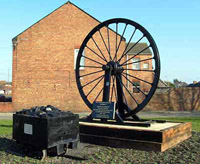 I was eighteen, and I never got round to asking him if any of his family had been living in Burradon at the time. One of the deceased was a Francis Smith, and a Thomas Smith is listed as one of the survivors, but Smith is a very common surname and I can't prove if they were related to my grandfather's family at all.
I was eighteen, and I never got round to asking him if any of his family had been living in Burradon at the time. One of the deceased was a Francis Smith, and a Thomas Smith is listed as one of the survivors, but Smith is a very common surname and I can't prove if they were related to my grandfather's family at all.
In 2011 a memorial was created in Burradon-Camperdown to commemorate the disaster. Today marks 155 years since it happened. There's also a further memorial (shown on the right) dedicated to all the men and boys who died during the years the mine was in operation.
If you're interested in reading more about the disaster, most of what I've learned has come from the fantastically detailed account written by Alan Fryer, you can find the shorter version here and the longer version here. There's also a list of the deceased and their families available on the Burradon-Camperdown community website.
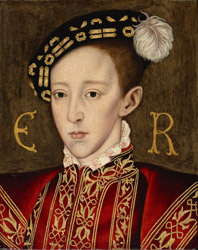 Edward was young, he couldn’t lead his troops in to battle against the French (a guaranteed way to gain some popularity) or marry a beautiful princess with a rich dowry (a wedding was also a good way to cheer the people). His regency council, who had been named in Henry’s will, were quick to get him crowned as it gave both him and them legitimacy. While the organisation may have been rushed, the coronation itself was still a splendid display of Tudor wealth.
Edward was young, he couldn’t lead his troops in to battle against the French (a guaranteed way to gain some popularity) or marry a beautiful princess with a rich dowry (a wedding was also a good way to cheer the people). His regency council, who had been named in Henry’s will, were quick to get him crowned as it gave both him and them legitimacy. While the organisation may have been rushed, the coronation itself was still a splendid display of Tudor wealth.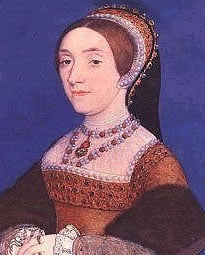
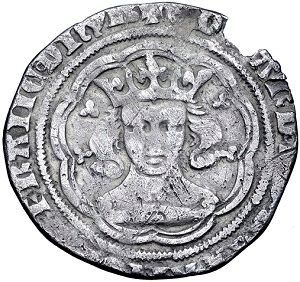
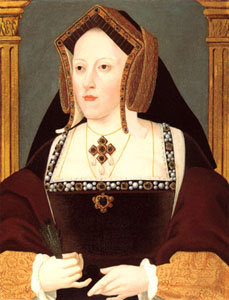 As any student of Tudor history will know, that was a marriage that did not last long or end happily. Catherine spent several years as a widow before marrying King Henry VIII within weeks of his father's death. There followed over twenty years of heartbreak as Catherine frequently miscarried, gave birth to stillborn babies or lost live children within weeks of their birth, with only one daughter name Mary surviving in to adulthood. To this day the reasons why the family was hit by so many tragedies has baffled scientists, especially as it then continued with Anne Boleyn (Jane Seymour had one live son but died herself, Henry's following three wives never had children by him).
As any student of Tudor history will know, that was a marriage that did not last long or end happily. Catherine spent several years as a widow before marrying King Henry VIII within weeks of his father's death. There followed over twenty years of heartbreak as Catherine frequently miscarried, gave birth to stillborn babies or lost live children within weeks of their birth, with only one daughter name Mary surviving in to adulthood. To this day the reasons why the family was hit by so many tragedies has baffled scientists, especially as it then continued with Anne Boleyn (Jane Seymour had one live son but died herself, Henry's following three wives never had children by him).